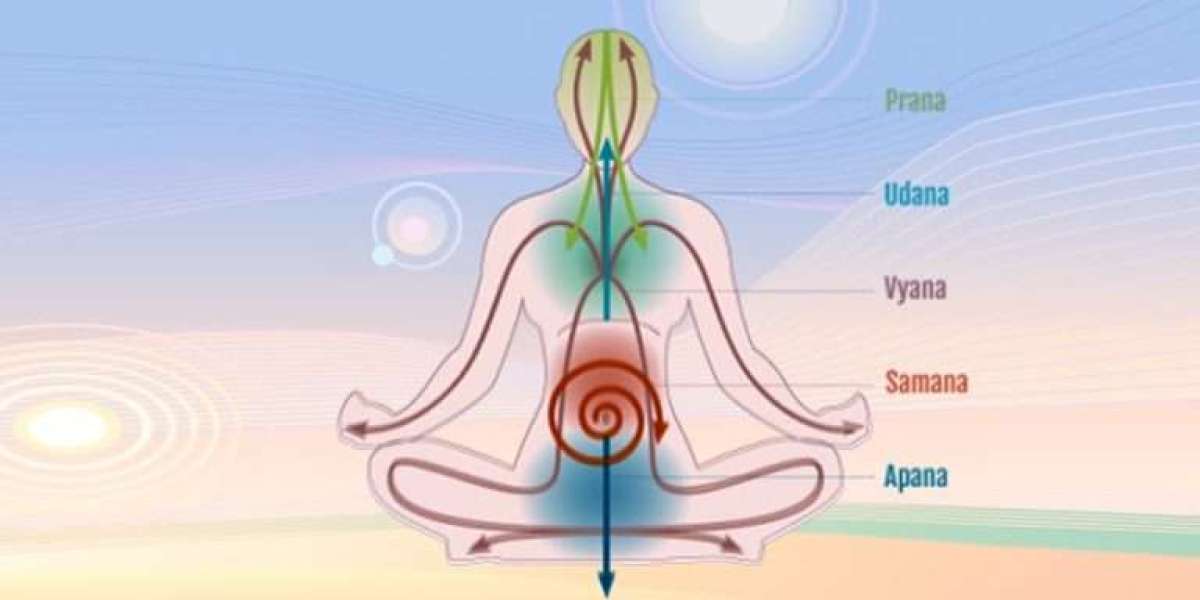In the ancient systems of Yoga and Ayurveda, the human body is more than just flesh and bones—it's a dynamic network of energy governed by subtle forces. Among these forces, the 5 pranas are considered the most essential. The word prana translates to "life force" or "vital energy," and it is believed to be the force that animates all living beings. But rather than existing as a single undifferentiated energy, prana is understood to manifest in five distinct forms, each with a specific role in the functioning of the body and mind.
These five manifestations—Prana, Apana, Samana, Udana, and Vyana—together regulate everything from breathing and digestion to circulation and speech. By becoming aware of the 5 pranas, one can begin to harmonize these forces through breathwork (pranayama), meditation, and mindful movement, leading to greater physical health and mental clarity.
The 5 Pranas and Their Functions
1. Prana Vayu – The Inward-Moving Energy
This form of prana governs inhalation and the intake of energy, both physical (like oxygen and food) and subtle (such as sensory impressions and thoughts). Prana vayu is centered in the chest and controls the heart and lungs. It is associated with the breath we draw in and is responsible for our vitality, alertness, and enthusiasm.
When prana vayu is balanced, we feel energized and focused. An imbalance can lead to fatigue, anxiety, or breathing difficulties.
2. Apana Vayu – The Downward-Moving Energy
Apana is located in the lower abdomen and governs elimination, reproduction, and the downward flow of energy. It controls bodily processes like urination, defecation, menstruation, and childbirth.
Balanced apana vayu results in healthy elimination and grounding. When disrupted, it can cause constipation, reproductive issues, or a feeling of being disconnected or spacey.
3. Samana Vayu – The Digestive Fire
Situated in the navel region, samana vayu manages digestion, assimilation, and the balancing of all the pranas. It acts as a central harmonizing force that supports the metabolism of both food and information.
When samana is functioning well, digestion is strong and mental clarity is enhanced. An imbalance can lead to indigestion, poor absorption of nutrients, and lack of discernment in thought.
4. Udana Vayu – The Upward-Moving Energy
Udana governs speech, expression, growth, and upward movement of energy. It is concentrated in the throat and head, playing a vital role in communication, willpower, and spiritual development.
Balanced udana enables clear communication and a strong sense of purpose. If out of balance, one might experience difficulty speaking, low confidence, or a lack of direction.
5. Vyana Vayu – The Circulatory Energy
Vyana is the expansive energy that circulates throughout the body. It governs movement, circulation of blood, and the coordination between the other pranas. This energy flows from the center outward, distributing vitality to every cell.
When vyana is in harmony, the body feels agile, coordinated, and alive. An imbalance can cause poor circulation, lack of coordination, or muscular issues.
Why the 5 Pranas Matter
Understanding the 5 pranas allows practitioners of yoga, meditation, and holistic healing to go beyond the physical body and address energetic imbalances at their root. Through practices like pranayama, one can influence the flow of these energies, promoting healing and inner peace. Techniques such as alternate nostril breathing, breath retention, and deep diaphragmatic breathing are designed to balance the pranas and enhance overall well-being.
In Ayurveda, diagnosing imbalances in the 5 pranas can also guide treatment plans for chronic conditions, emotional distress, and even spiritual stagnation. The integration of these concepts into modern wellness practices highlights how ancient wisdom can still guide us in living balanced, healthy lives today.
Conclusion
The concept of the 5 pranas offers a powerful lens through which we can understand the interplay between energy, breath, and consciousness. Each prana serves a distinct function, yet all work together in a complex, interdependent system. By becoming more aware of these vital forces, we empower ourselves to live with more intention, presence, and vitality. Whether through yoga, pranayama, or mindful daily living, harmonizing the 5 pranas is a transformative step toward holistic wellness and spiritual growth.







